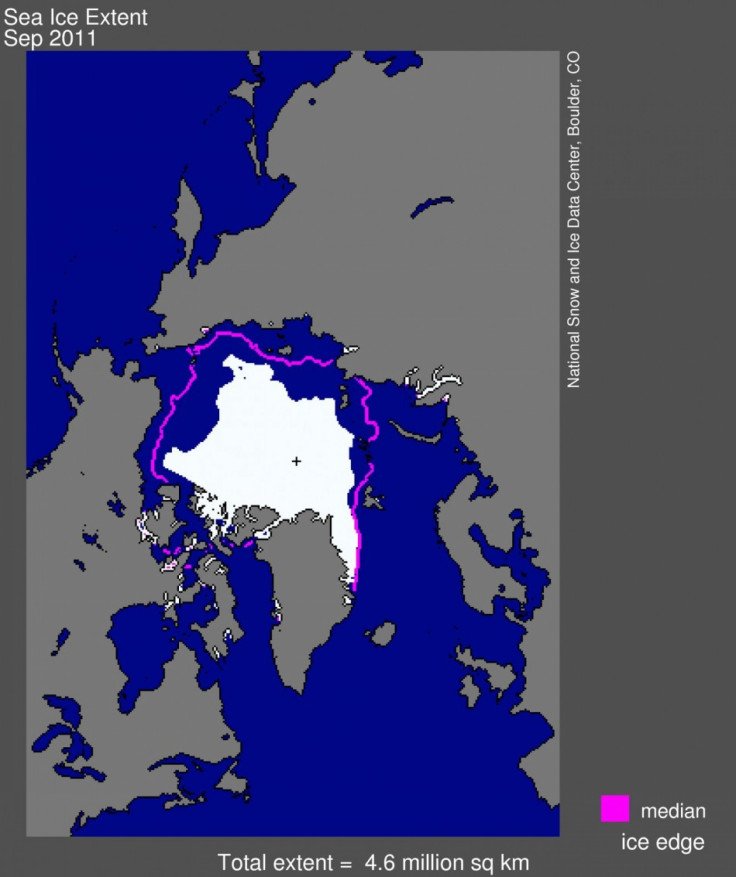Arctic Sea Ice Continues to Decline, Hits Near Record Low

As if the news about the Arctic's ozone hole outsizing the hole in Antarctica in early 2011 for the first time wasn't bad enough, Tuesday, NASA officials released more bad news. Sea ice covering the Arctic Ocean reached its second lowest level in recorded history in September.
Satellite data from NASA and the NASA-supported National Snow and Ice Data Center (NSIDC) at the University of Colorado in Boulder showed that the sheet of ice reached a new low in September. The record low was reached in 2007.
Every year, sea ice levels grow in the wintery months and shrink each summer as the Earth tips the northern region closer to the sun.
The near-record low was reached in 2011 even without the unusual weather conditions that scientists said the Arctic encountered in 2007. Scientists said that the ice may be becoming more vulnerable to melting.
Atmospheric and oceanic conditions were not as conducive to ice loss this year, but the melt still neared 2007 levels, Walt Meier, NSIDC scientist, said in a press statement. This probably reflects loss of multiyear ice in the Beaufort and Chukchi seas as well as other factors that are making the ice more vulnerable.
The sea ice decreased enough to open up both the Northwest Passage and the Northern Sea Route for brief periods in September.
Joey Comiso, senior scientist at NASA's Goddard Space Flight Center in Greenbelt, Md., said the continued low minimum sea ice levels fits into the large-scale decline pattern that scientists have watched unfold over the past three decades.
The sea ice is not only declining, the pace of the decline is becoming more drastic, Comiso said. The older, thicker ice is declining faster than the rest, making for a more vulnerable perennial ice cover.
Since 2007, sea ice has steadily decreased compared to a decade earlier.
Though the average sea ice thickness in September 2011 was higher than that reached in September 2007, researchers noted that for 10 days, sea ice levels dropped lower than 2007 levels.
This summer's low ice extent continued the downward trend seen over the last 30 years, which scientists attribute largely to warming temperatures caused by climate change. Data show that Arctic sea ice has been declining both in extent and thickness. Since 1979, September Arctic sea ice extent has declined by 12 percent per decade.
Climate models have suggested that the Arctic could lose almost all of its summer ice cover by 2100, but in recent years, ice extent has declined faster than the models predicted.
© Copyright IBTimes 2025. All rights reserved.





















